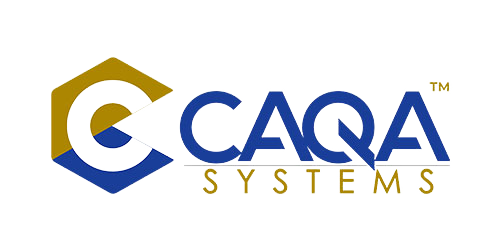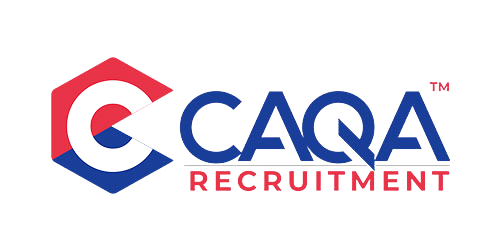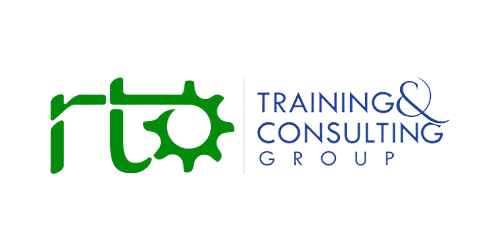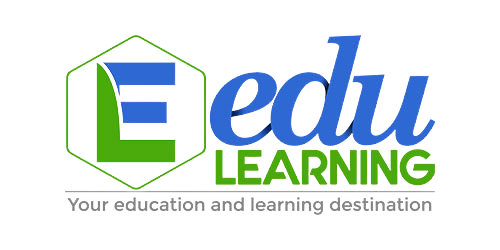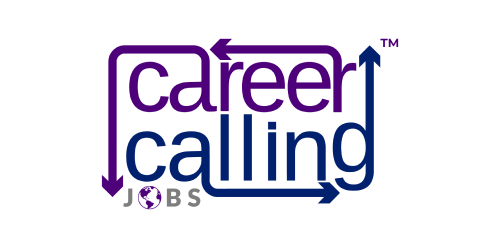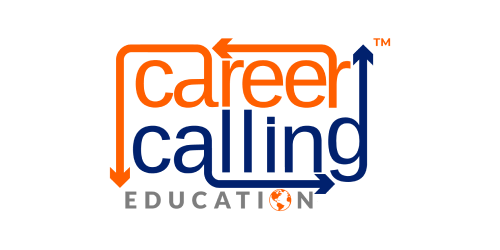While much discussion about AI in vocational education focuses on preparing students for an automated workforce, a quiet revolution is taking place within VET institutions themselves. Technical colleges, trade schools, and training centers worldwide are increasingly deploying sophisticated AI systems to transform their own operations, from classroom instruction to administrative processes. These implementations offer a fascinating window into AI's practical applications, demonstrating concrete benefits that extend far beyond theoretical possibilities. As VET institutions face mounting pressures—shrinking budgets, changing student demographics, industry demands for ever-evolving skills—artificial intelligence is emerging as a critical tool for institutional resilience and effectiveness. By examining how leading institutions are implementing these technologies today, we gain valuable insights into the practical realities of AI adoption that often remain obscured in broader discussions about future workforce impacts.
The most visible AI applications within VET institutions appear in the classroom, where adaptive learning platforms are personalising instruction at scale. At Central Queensland TAFE, for instance, the implementation of AI-powered learning software in electrical apprenticeship programs has yielded remarkable results. The system continuously assesses each student's performance, identifying knowledge gaps and learning preferences in real-time. It then customises content delivery, adjusting difficulty levels, providing targeted remediation, and offering enrichment opportunities tailored to individual needs. Early data shows a 23% improvement in completion rates and a 17% reduction in time-to-qualification for participating apprentices. Importantly, the system doesn't replace instructors but rather augments their capabilities. As one veteran electrical trades teacher explained, "The AI handles the routine knowledge delivery and basic assessment, freeing me to focus on the complex demonstrations, hands-on guidance, and mentoring that machines simply can't provide. I'm teaching better because I'm concentrating on what humans do best."
Similar implementations across diverse vocational fields demonstrate how AI-enhanced instruction can address long-standing challenges in technical education. In healthcare training programs, virtual patients powered by natural language processing allow nursing assistants to practice communication skills and clinical decision-making in low-stakes environments before interacting with actual patients. Culinary institutes employ computer vision systems that analyse student technique during food preparation, providing instant feedback on knife skills, temperature control, and presentation aesthetics. Automotive technology programs utilise augmented reality combined with AI diagnostics to simulate complex repair scenarios without risking damage to actual vehicles. These applications share a common thread: they create opportunities for deliberate practice with immediate feedback, long recognised as essential for skill development but historically difficult to provide at scale within resource constraints.
The benefits of AI-enhanced instruction extend beyond skill acquisition to address another persistent challenge in vocational education: student engagement. Traditional approaches to teaching technical content—particularly foundational theory and safety procedures—often struggle to maintain student interest despite their critical importance. At Milwaukee Technical College, an AI-driven simulation platform has transformed how manufacturing students learn workplace safety protocols. Rather than passively reviewing regulations and case studies, students navigate interactive scenarios where they must identify hazards and apply appropriate responses. The system generates unique situations based on each student's performance, challenging them with increasingly complex scenarios as they demonstrate mastery. "The difference in student engagement is night and day," reports the program director. "What was once our highest dropout point has become a highlight of the program. Students are competing to achieve perfect safety records in increasingly difficult simulations and, most importantly, transferring those habits to our actual workshop environments."
Beyond instructional applications, AI is revolutionising how VET institutions handle student support services. Early intervention systems now analyse dozens of data points—attendance patterns, assignment submissions, learning management system engagement, assessment performance—to identify students at risk of disengagement or failure before human advisors might recognise warning signs. At the Sydney Institute of Technology, the implementation of an AI-powered early alert system increased first-year retention by 14% across certificate programs. The system flags concerning patterns to student success coaches, who then initiate personalised outreach. Importantly, the institution emphasises that the AI provides decision support rather than making automated interventions. "The technology identifies patterns humans might miss, but the actual intervention requires human empathy and judgment," explains their student success director. "Our coaches develop personalised success plans based on the specific challenges each student faces, whether that's academic difficulties, financial stress, or personal issues. The AI helps us target our limited human resources where they'll have the greatest impact."
Career services departments have similarly transformed through AI integration. Traditional job placement approaches often struggled to keep pace with rapidly evolving industry requirements, resulting in misalignment between training and employment opportunities. Modern systems now continuously analyse millions of job postings, identifying emerging skill requirements and employment trends with far greater precision than manual methods allowed. At Ontario Skills College, an AI-powered career navigation platform uses predictive analytics to help students understand how different educational pathways connect to evolving labor market opportunities. The system draws connections between a student's existing skills, additional credentials they might pursue, and projected job openings, helping them make informed decisions about specialisations or additional certifications. "We've moved from point-in-time career counseling to ongoing navigation support," notes their employment services manager. "Students receive personalised labour market insights throughout their educational journey, allowing them to adjust their learning pathways as opportunities evolve."
Administrative operations represent another frontier for AI implementation within VET institutions. Enrollment management, historically characterised by labor-intensive processes and unpredictable outcomes, has been particularly transformed. Predictive modeling now enables admissions teams to forecast application volumes, conversion rates, and yield with remarkable accuracy. Dynamic pricing algorithms optimise financial aid distributions to maximise enrollment while efficiently allocating limited institutional resources. Chatbots handle routine inquiries about application requirements and deadlines, allowing admissions counselors to focus on meaningful interactions with prospective students. At Brandenburg Technical Academy in Germany, the implementation of an AI-enhanced enrollment management system increased new student enrollment by 18% while simultaneously reducing recruitment costs by 23%. "We're reaching the right students with the right messages at the right time," explains their director of admissions. "The system helps us identify which programs have capacity and which prospective students are most likely to succeed in those programs, allowing for much more strategic outreach than our previous one-size-fits-all approach."
Financial operations have similarly benefited from AI adoption. Sophisticated forecasting models now analyse historical patterns, current enrollments, and external economic indicators to project revenue and expenses with greater precision than traditional methods. Resource allocation algorithms optimise the scheduling of facilities, equipment, and personnel to reduce waste and maximise utilisation. Procurement systems continuously analyse spending patterns to identify opportunities for consolidation or negotiation. The cumulative effect of these implementations can be substantial. Western Australia TAFE reported $3.8 million in operational savings in the first year after implementing an AI-enhanced financial management system—savings subsequently reinvested in student support services and facility improvements. "In an era of constrained public funding, these efficiencies aren't just nice to have—they're essential for institutional sustainability," notes their financial controller. "We can now direct resources where they create the greatest educational value rather than being consumed by administrative overhead."
Facilities management represents another domain where AI implementations are delivering concrete benefits. Smart building systems equipped with IoT sensors continuously monitor environmental conditions, energy usage, and equipment status, automatically adjusting settings to optimise comfort while minimising consumption. Predictive maintenance algorithms analyse performance data from workshop equipment, identifying potential failures before they occur and scheduling maintenance during non-instructional periods. Space utilisation analytics examine historical usage patterns to inform scheduling decisions, ensuring classrooms and laboratories are allocated efficiently. At Copenhagen Technical College, the implementation of an AI-powered facilities management system reduced energy costs by 27% while simultaneously improving student satisfaction with physical learning environments. "The system makes thousands of micro-adjustments daily that would be impossible for a human facilities team to manage," explains their operations director. "From adjusting ventilation based on room occupancy to predictively ordering replacement parts for workshop equipment before failures occur, we've seen both operational savings and improved educational experiences."
Curriculum development—historically a slow, labor-intensive process—has been dramatically accelerated through AI applications. Natural language processing systems now continuously analyse industry publications, job postings, and regulatory updates to identify emerging skill requirements in various occupational fields. These insights enable curriculum designers to identify gaps between current instructional content and evolving workplace demands, ensuring training programs remain aligned with employer needs. At Singapore Polytechnic, an AI-powered curriculum analytics platform reduced the average time to complete major program updates from 18 months to just under 7 months. "The system doesn't replace faculty expertise in determining what to teach," clarifies their academic director. "Rather, it provides data-driven insights about industry trends that inform those decisions and automates much of the documentation and compliance verification that previously consumed faculty time. Our instructors are spending less time on paperwork and more time creating engaging learning experiences."
Quality assurance processes have similarly benefited from AI enhancement. Traditionally, evaluating instructional effectiveness relied heavily on end-of-term student evaluations and occasional peer observations—approaches that provided limited insights and often came too late to benefit current students. Modern systems now employ continuous analysis of multiple data sources: student engagement patterns, formative assessment results, sentiment analysis of course communications, and even computer vision assessment of student attention in physical classrooms. These insights enable real-time adjustments to instructional approaches rather than waiting for end-of-term reviews. At Barcelona's Technical Institute, implementation of a comprehensive instructional analytics platform improved student satisfaction scores by 31% and assessment outcomes by 17% within a single academic year. "The system provides instructors with actionable insights throughout the term," explains their quality enhancement director. "If students are struggling with particular concepts or engagement is dropping in specific modules, faculty receive immediate notifications with suggested interventions rather than discovering issues months later when it's too late to help those students."
While these implementations demonstrate AI's transformative potential, they also reveal common implementation challenges across institutions. Data integration represents a persistent hurdle, as legacy systems often contain valuable information in formats incompatible with modern AI applications. Privacy considerations require careful navigation, particularly in jurisdictions with strict data protection regulations. Change management proves essential, as staff accustomed to traditional processes may initially resist AI-enhanced approaches. Most critically, successful implementations require careful attention to the human-technology interface, ensuring AI systems augment rather than attempt to replace human judgment in areas where contextual understanding, ethical considerations, and empathy remain essential.
The experiences of early adopters highlight several best practices for institutions considering similar implementations. First, successful projects typically begin with clearly defined problems rather than adopting technology for its own sake. Queensland Skills Institute's award-winning predictive analytics program started with a specific challenge—reducing first-year attrition in construction trades, rather than a general desire to implement AI. Second, effective implementations involve end-users throughout the design process. When Denmark Technical College developed its AI-enhanced feedback system for welding students, they included both instructors and apprentices in every phase of development, ensuring the resulting system addressed actual needs rather than technologists' assumptions. Third, successful institutions invest in building staff capacity alongside technological infrastructure. Northern Alberta Institute of Technology pairs every AI implementation with comprehensive professional development, ensuring faculty and staff understand both how to use new systems and the reasoning behind their adoption.
Perhaps most importantly, leading institutions maintain a clear focus on enhancing rather than replacing human capabilities. "Our guiding principle is that AI should handle the routine so humans can focus on the exceptional," explains the innovation director at Ontario's Confederation College. "The technology manages standardised assessments, answers common questions, and identifies patterns across large datasets—tasks where machines excel. This creates space for our faculty and staff to concentrate on areas where human judgment, creativity, and empathy remain essential: complex problem-solving, inspirational mentoring, and helping students navigate personal challenges. We're not replacing people with machines; we're empowering people with machines."
The future of AI in vocational education institutions points toward increasingly sophisticated implementations building on these early successes. Emerging applications include AI-facilitated collaboration between geographically distributed campuses, enabling specialised instructors to simultaneously teach across multiple locations with virtual presence systems. Augmented and virtual reality integrated with AI coaching will increasingly allow students to practice complex technical skills in immersive environments before applying them in physical settings. Comprehensive student journey analytics will enable highly personalised educational pathways tailored to individual goals, learning preferences, and employment objectives. Perhaps most transformatively, AI systems will increasingly facilitate connections between educational institutions, employers, and learners throughout careers rather than just during initial training periods, supporting ongoing skill development as occupational requirements evolve.
For institutional leaders navigating this rapidly evolving landscape, several strategic considerations emerge. First, while commercial AI solutions offer the quickest implementation, institutions should carefully consider data ownership implications, as proprietary systems may limit future flexibility and create dependence on specific vendors. Second, ethical frameworks for AI usage should be established proactively rather than reactively, particularly regarding algorithmic bias, surveillance concerns, and privacy protections. Third, institutions should anticipate and address potential impacts on staffing structures, providing reskilling opportunities for employees whose traditional responsibilities are augmented or transformed by AI systems. Finally, leaders should recognise that successful AI implementation represents a continuous journey rather than a destination, requiring ongoing refinement as technologies evolve and institutional needs change.
The financial implications of these transformations warrant particular attention. While AI implementations typically require significant initial investment, early adopters report compelling returns through improved operational efficiency, enhanced student outcomes, and new revenue opportunities. Western Sydney Institute's comprehensive AI implementation required $4.2 million in initial investment but generated $7.8 million in operational savings and additional revenue within three years through improved retention, enhanced recruitment effectiveness, and operational efficiencies. "The financial case is compelling even before considering educational benefits," notes their finance director. "When you add improved completion rates, better employment outcomes, and enhanced industry partnerships facilitated by these systems, the return on investment becomes overwhelming. We simply couldn't afford not to make these changes given the competitive and fiscal pressures facing our sector."
For vocational education leaders, the message emerging from early adopters is clear: artificial intelligence offers unprecedented opportunities to enhance institutional effectiveness while improving educational outcomes. The most successful implementations don't simply automate existing processes but fundamentally reimagine educational delivery and institutional operations to leverage complementary strengths of human expertise and machine capabilities. As one technical college president succinctly observed, "AI isn't the future of vocational education—it's the present. Institutions that effectively integrate these technologies are already seeing transformative benefits, while those waiting for perfect solutions risk falling irrevocably behind." The experiences of pioneering institutions demonstrate that with thoughtful implementation focused on enhancing human capabilities rather than replacing them, artificial intelligence can help vocational education institutions not just survive but thrive amid unprecedented technological, economic, and social change.












